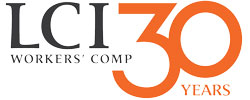
Guest Contributor: Dana Eness – Executive Director of Stay Local! and The Urban Conservancy
For most of America’s history, the public perceived an “investor” to be only wealthy individuals and institutions who were able to directly participate in equities, bonds and other income producing markets. But the fact is, that today, nearly all Americans are investors to some degree. And while we may feel that our individual 401K or pension accumulations don’t amount to a hill of beans, Americans’ long-term savings in stocks, bonds, pensions, life insurance, and mutual funds add up to approximately $30 trillion, a significant amount of investing power. However, less than 1% of these savings reach local small businesses where they could enrich our community with more jobs, a stronger tax base that would support better-funded schools, infrastructure and public services, and greater philanthropic support for local causes.
In his 2012 book, Local Dollars, Local Sense: How to Shift Your Money from Wall Street to Main Street and Achieve Real Prosperity, economist Michael Shuman states that communities can prosper if they follow three simple economic rules:
- Maximize the percentage of jobs in your local economy that exist in locally-owned businesses.
- Maximize the diversity of businesses in your community, so that your economy is as self-reliant and resilient as possible.
- Prioritize spreading and replicating local business models with outstanding labor and environmental practices.
In other words, we need to redirect more of our investments to support our local businesses so that we can all reap the benefits of our investment choices in tangible ways. Banking at our local community banks and credit unions is an important first step because they are able to develop products responsive to local business needs such as revolving loan funds and new kinds of certificates of deposit to increase lending to local businesses.
Business expert Amy Cortese coined the term “locavesting” to describe this growing movement to redirect more investment away from Wall Street and toward community Main Streets. How can small businesses tap into this desire to invest closer to home, and counter a lending climate where venture capital and traditional loans are hard to come by? In Locavesting: The Revolution in Local Investing and How to Profit from It, Cortese presents some options including: approaching customers (after all, they know you best); looking for small business investing clubs; organizing yourself as a cooperative; and looking into direct public offerings or stock exchanges.
With a little ingenuity and a strong partnership between local lending institutions, independent businesses and their customers, there are countless ways we can redirect a greater portion of our substantial savings back into our communities and enjoy the benefits of a healthy return on our investment every day.
To learn more about Stay Local! and its Local Investing 101 Workshop scheduled for early 2013 in New Orleans, contact Mark Strella, Stay Local! Project Coordinator, at 504-561-7474 or mark@staylocal.org.
Dana Eness is the Executive Director of New Orleans-based nonprofits The Urban Conservancy and Stay Local! The Urban Conservancy is dedicated to research, education, and advocacy promoting the wise stewardship of the urban built environment and local economies. Stay Local! is metro New Orleans’ independent business alliance committed to strengthening the local economy by connecting
independent businesses to resources, markets, and each other.
